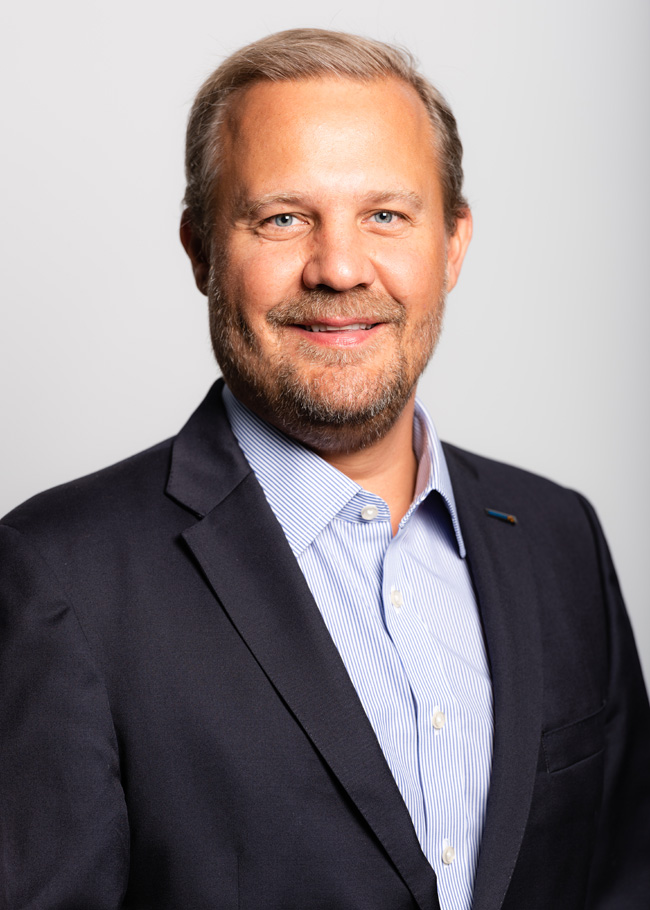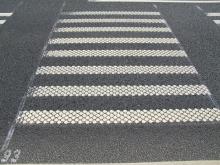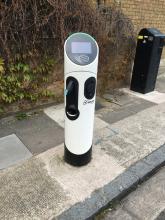
It was in Austria in 1969 when Manfred Swarovski opened his first glass bead factory. Five years later, operations started in the US. As the years rolled by there followed acquisitions and expansion of manufacturing facilities as well as a shift into intelligent transportation systems globally.
Fast forward to 2019 and the family company has half a century in business under its belt. It now has a presence in 80 countries employing 3,700 people.
Sadly, Manfred isn’t around for the company’s 50th anniversary – he died last year. But his sons are, including Philipp Swarovski, who maintain the family business and its traditions. Philipp, the chief operating officer of Road Marking Systems division, has degrees in engineering and management. He is also a trained gemmologist, having graduated from the Gemological Institute of America in Carlsbad, near San Diego, California.
The young Swarovski was fascinated with all things engineering. “I was technical when I was young. It was like having a fast car. I wanted a fast computer. I guess I was the family geek,” he says. He confesses to ripping apart his small motorcycle simply to see how it worked. He also put time in working for the family’s crystal business, called D. Swarovski – his great, great grandfather - which cuts gems and glass optics, including for other divisions of the Swarovski family companies.
In 2013 Philipp moved on to
All the infrastructure systems have to be - and increasingly are – linked and connected. It’s a mix of various technologies, from safety on cars to road markings, such as glass beads within road marking materials. Swarovski believes that this connectivity will give road users a baseline road condition to make drivers more safety conscious and by doing so reduce the number of accidents and save lives.
There will also need to be random back-up systems for vehicles to position themselves. “And road users are getting more diverse with electric vehicles, autonomous cars, e-scooters, and more cyclists. It is hard to say what is the future is but I believe that road markings are not in danger of disappearing for the next 30 to 50 years.”
Autonomous driving
It’s a given that autonomous vehicles will need more sophisticated road infrastructure, he says. “But I think it will still be a very lengthy process until road infrastructure will be entirely different from what we see today. Also, it is unclear how fast this development will move ahead,” says Swarovski, who drives a Level 2 autonomous car. “Even with an exponential development of autonomous vehicle performance, it will take several years before we see L5 being as good as humans at driving. And at that we will have a mixed environment of non-autonomous, semi-autonomous and autonomous cars for years to come.”
He notes that the
Level 5 vehicles will require an incredibly more complex road infrastructure than now. “Beside high-definition maps for autonomous navigation, high-performance road markings will be crucial for ensuring system reliability and traffic safety. This is happening already in California where
Everyone in the transportation sector is facing a technology rush. Consider embedded sensors, as an example of the problem for agencies setting standards, and consider the 500km Munich-Berlin distance. “It may take a decade to embed sensors along the route. If you start in Munich, by the time you finish in Berlin, the sensors at the Munich end might be outdated. But we still need standards to allow for innovation because they set the lowest level of product or system performance.”
Reckless testing
A recent pilot scheme in the UK removed the central white lines from several busy A-class roads where speed limits are set at around 100km/h. This induced driver uncertainty, which led to a 13% reduction in speed and fewer accidents, according to the operators of the scheme. But there are some concerns over this testing. Swarovski even challenges the theory that such changes will reduce accidents in the long run. Such testing could possibly be “reckless” and “not a good idea”, he explains.Conversely to the test result, “driving on roads with good road markings is more convenient, much safer and lets the traveller arrive much quicker at the destination”. You get a “life-saving advantage” with road markings, especially well-maintained ones. If the goal of removing them is to force drivers to slow down, then at what point is there congestion on the road? Roads are built to a standard and designed to move cars in a well-ordered – and safe – speed.
“Well guided and smoothly flowing traffic is, for us at Swarco, environmentally sound. More cars spending more time on the road would raise the carbon footprint. Also, for businesses, slower transport of goods could translate into higher consumer prices,” he says.
It’s no secret that government financial cuts in many countries have threatened maintenance of highways safety features, including road markings. “In general there has been a steady deterioration in the quality of road markings – in some places they have simply disappeared,” he says.
“At the same time, modern road markings boast various optical and haptic properties that greatly improve safety. As such there needs to be a more universal – globally accepted - definition of what constitutes a ‘good road marking’ which is visible both to driver and intelligent vehicle,” says Swarovski.
A big advance, he believes, would be road markings that survive better on road surfaces especially prone to ice forming, or on surfaces that are constantly wet. Longer lasting paint which also keeps its retroreflectivity longer in these instances will save money and lives.
A problem on the horizon, at least for countries that get severe winter conditions - Russia, the Nordic states, Canada and the US – could be sensors whose performance is reduced by snow cover. Also, snowploughs may be liable to simply scrape off the sensors or at least lower the reflectivity of some paint and embedded glass beads.
“Whatever happens, there will have to be a lot more long-term thinking about highway maintenance, including road markings,” he says. “Technological improvements cost money, but local authorities must think that if the products last longer, then savings are larger in terms of life cycle costs. More lives will also be saved in the long run.”







